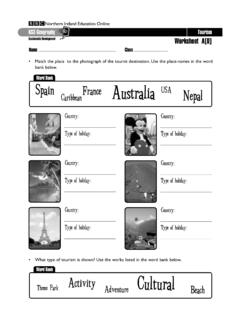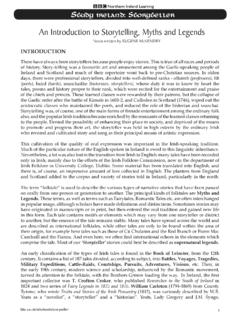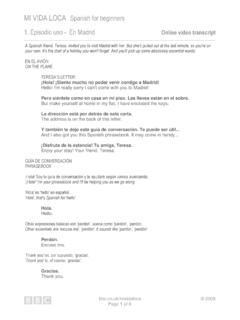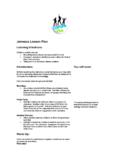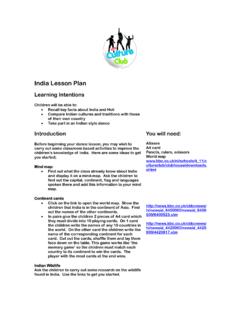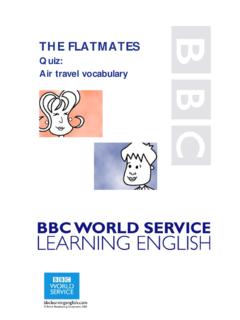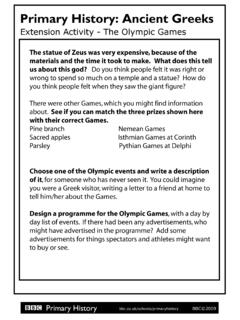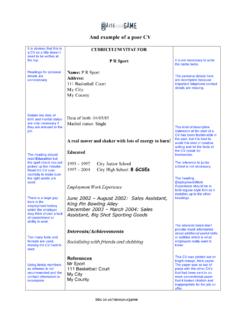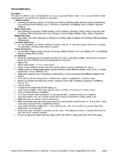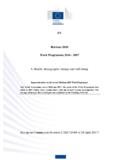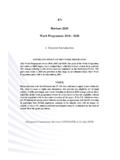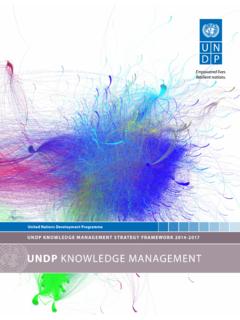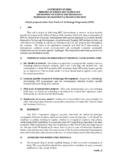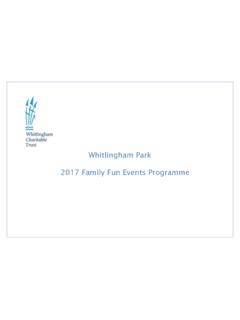Transcription of CHECK IT OUT! FRIENDSHIP Spring 2001 - BBC
1 CHECK IT OUT!FFRRIIEENNDDSSHHIIPP1 Age 9-11 Key Stage 2 Series Producer: Henry LavertySpring 2001 Friday - 19 January to 2 MarchSummer 2001 Tuesday 24 April to 5 JuneBBC TWO Northern IrelandCHECK IT OUTS pring 2001In this programme a group of children from Comber in Co. Down talk to Christine Bleakley about programme also features a story about two cousins who don t always see eye to Key Issues2. Preview Key words FRIENDSHIP web3. Activities (after viewing the programme ) Jacqui and Jill Faces and Friends4.
2 Activities (to do at home) Interviewing an adult5. Games FRIENDSHIP rainbow Affirmation hands FRIENDSHIP qualities word search6. More to Explore How to make friends Composing poems FRIENDSHIP Circles Wearing a Mask Communicating with friendsCHECK IT OUT!FFRRIIEENNDDSSHHIIPPT ransmission: Friday 19 JanuarySummer Term: Tuesday 24 AprilCHECK IT OUTS pring 20012 KEY ISSUESThis programme aims to explore FRIENDSHIP and to consider: what makes someone a friend what we expect from our friends why we have the friends we have what kinds of things we can do together with friends how friends can be the same as us or different to us how we feel when we fall out with a friend what might make someone an enemyPREVIEWIt is suggested that this section is completed prior to viewing the following key words may need to be clarified.
3 FRIENDSENEMIESTRUSTUNDERSTANDINGACCEPTAN CEFRIENDSHIPPERSONALITYFORGIVENESSBETRAY ALCHECK IT OUTS pring WebClass or group the children to brainstorm what qualities they would expect a friend to have. Afterwards, they could agreeon a list of prioritised qualities which they could record in a web style as shown could also brainstorm what activities they share with their friends, swimming; going to the park;riding scooters; playing football; going to the GB/Scouts; listening to music. This might be more manageablefor younger children and it still offers the opportunity for discussion about the qualities which friends IT OUTS pring 20014 ACTIVITIES- after viewing the programmeJacqui and JillThe children should have watched the programme before completing this activity.
4 Recount the story about Jacqui and Jill to ensure the children understand what happened. Discuss therelationship between Jacqui and children should work in groups of three to allow for maximum interaction and participation. They shouldthen complete the teacher could then list the main ideas on an enlarged worksheet. Does jealousy feature as a reason for people not being friendly? What other reasons are given for children not being friends?Emphasis should be placed on the notion of friends being different but possibly having something in IT OUTS pring 20015 JACQUI AND JILL WORKSHEETWhy do you think the two girls were not friendly?
5 What changed to make them become friendly?Do people have to be alike to be friends? Why/why not? CHECK IT OUTS pring 20016 ACTIVITIES - after viewing the programme and FriendsRecall the masks made by the children in the may be a good opportunity to discuss the phrase used by one child in the programme "Unfriendly is unhappy". Do pupils think this is true? Why do they think this?Use pictures from magazines to look at people s expressions and to help pupils focus on the ideas different colours, symbols, images and shapes to make masks portraying friendly/unfriendly faces.
6 Thechildren should have the opportunity to discuss their masks either with a partner or with the whole IT OUTS pring 20017 ACTIVITIES - to do at homeInterviewing an Adult about FriendshipDiscuss the idea of "lifelong" friends with the whole class. You may need to define what "lifelong" means. Do they know anyone who has a lifelong friend? What would be the benefits of having such a friend? How could they find out more about such a FRIENDSHIP ? Guide them to the idea of asking someone in such a position about their pupils to work in small groups to compose suitable questions which they could ask an adult.
7 Ask pupils toshare their lists with the class and then agree a single set of questions with the whole class. These may then beused for the Take it Home pupils to use the list of questions to interview a suitable adult at home. Responses could be taped orrecorded in written form with the help of the the list of questions could be used to interview a suitable visitor to the classroom. This couldalso involve the children composing an invitation to be sent to the proposed findings from the interview could be discussed during an open forum and conclusions recorded by IT OUTS pring 20018 GAMESF riendship RainbowThis game can be used in a variety of pupil receives a copy of the FRIENDSHIP Rainbow.
8 They then write their name in one band of theRainbow and a brief phrase to describe what they think is the most important thing about a friend. This bandcan then be coloured in and passed to another person (perhaps someone who sits at their table or near to them)who repeats the process. This continues until each child s rainbow is alternative approach is for the "owner" of the FRIENDSHIP Rainbow to write his/her name in a cloud. Thesheet is passed around to other pupils who then volunteer to make contributions.
9 Each pupil identifies apositive quality about the child who owns the rainbow and writes this in one band before passing it on. Thisactivity could be linked to lessons on adjectives, where pupils could discuss or undertake further written worklooking at words which are used to describe rainbow can then be used for display and discussion IT OUTS pring 20019My RainbowCHECK IT OUTS pring HandsEach pupil draws an outline of their hand on a sheet of paper and puts their name on it. In small groups thesheets are passed around and everyone is asked to write on the hand something positive about what makesthat person a good friend.
10 Make it clear that negative remarks are not allowed. Pupils could sign their namesto their remarks. They could also share what is written on their hand with the rest of the group and perhapsdiscuss how they feel about hands may then be put on IT OUTS pring 200111 GAMES Qualities Word SearchEncourage pupils to discuss FRIENDSHIP qualities in pairs or small groups. Ask them to think about the qualities in the word search and to identify which ones they think are mostimportant and which they think are not important at the word search.

